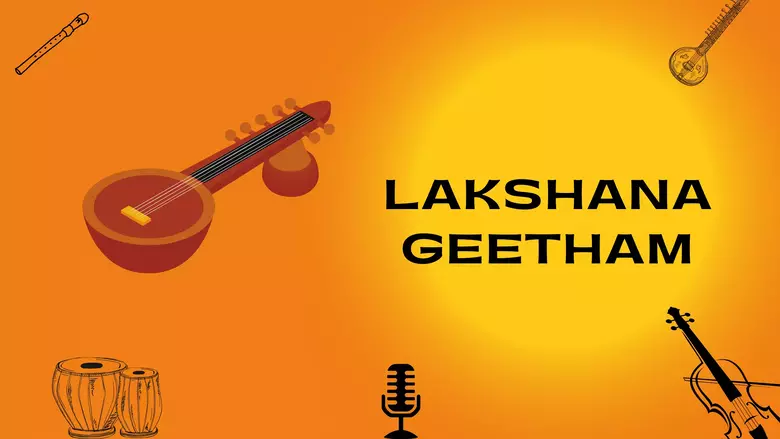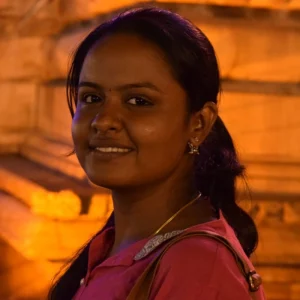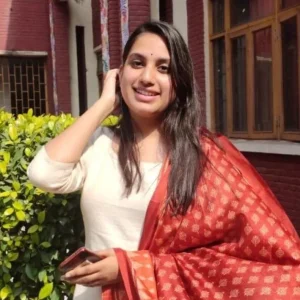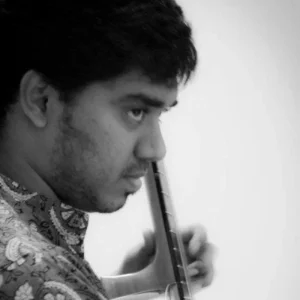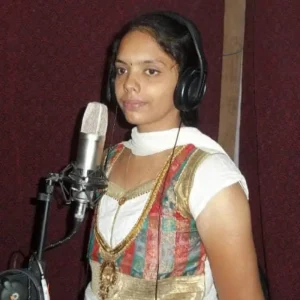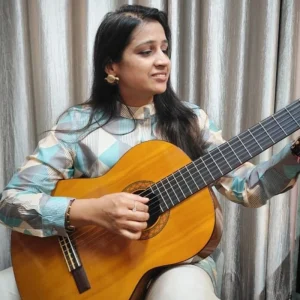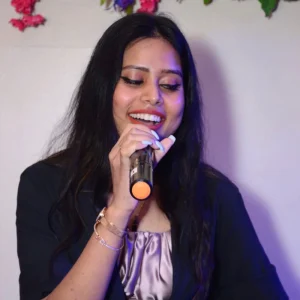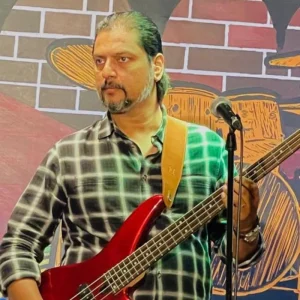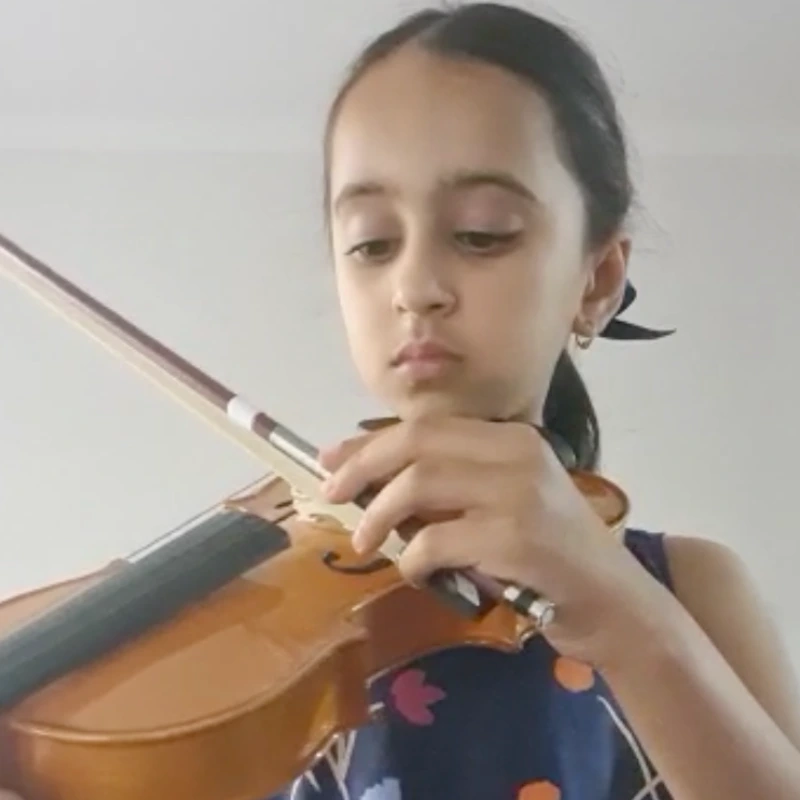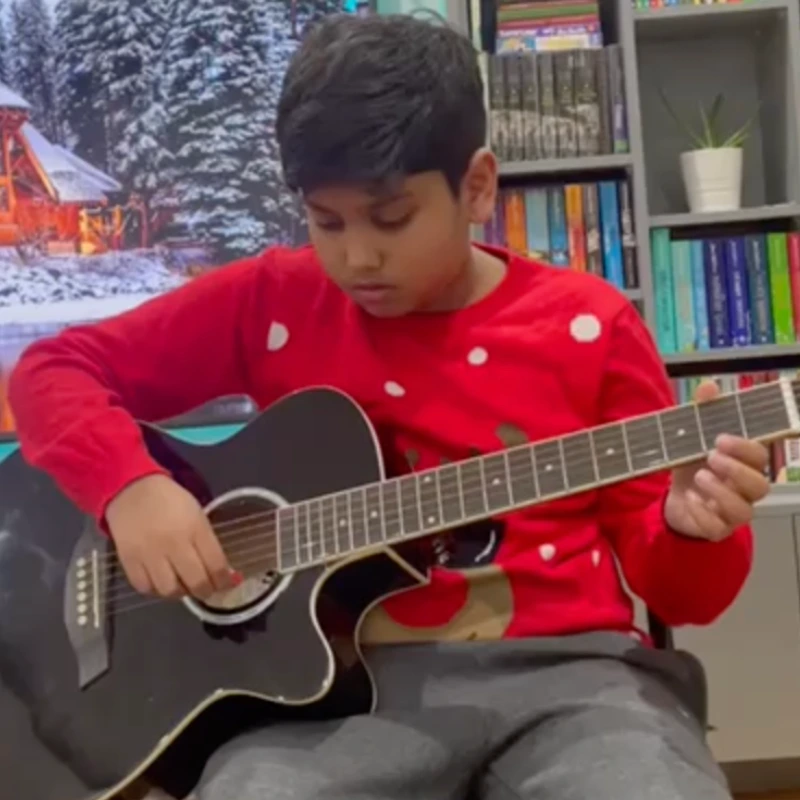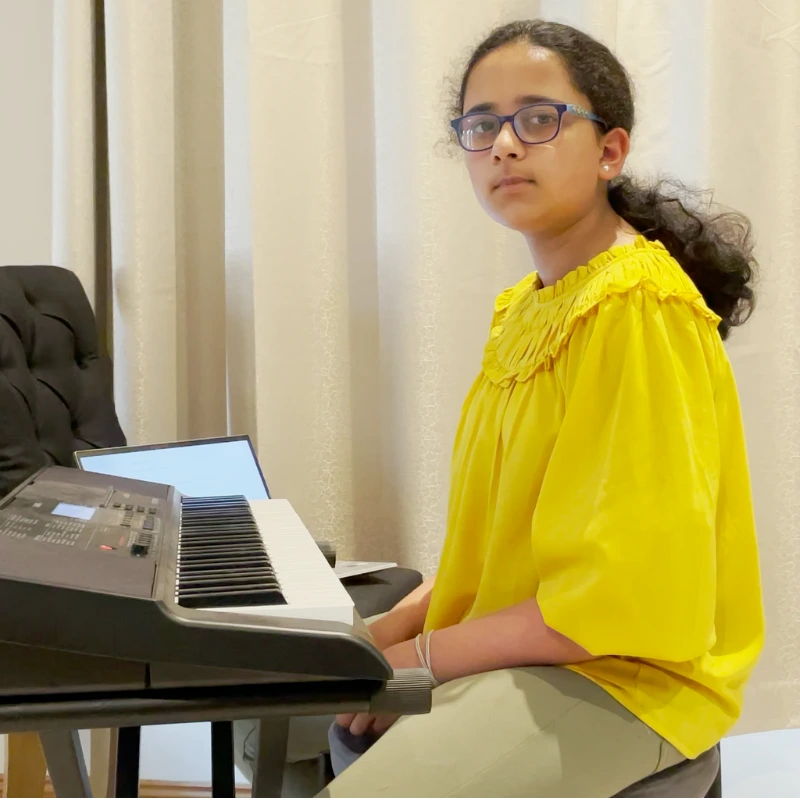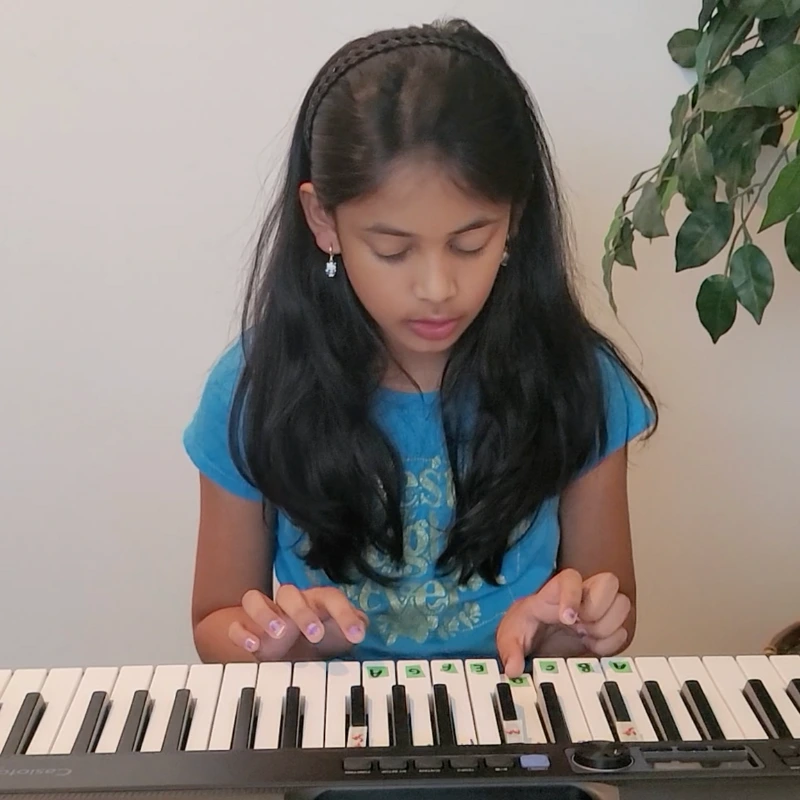Lakshana Geethams are a set of elemental Carnatic music compositions that teach the fundamentals of Carnatic music. Carnatic music is a centuries-old tradition of classical Indian music. This genre of music uses specific songs to teach beginners the principles of the art form. This set of songs known as Lakshana Geetams focuses on teaching essential concepts like notes, rhythm, and melody. There is no one definitive version of a Lakshana Geetham; instead, each musician typically has their interpretation of these songs. This can make learning Carnatic music a bit more challenging, allowing for more creativity and expression.
Many people want to learn Geethams in Carnatic music but don’t know where to start. This post offers tips and tricks to help you find the right teachers who can teach you what you want to learn. In this article, we will explore the history and meaning of Lakshana Geetham and discuss some of the famous renditions of this piece. If you are a fan of Carnatic music or simply interested in learning more about this intricate composition, then be sure to read on!
What is Lakshana Geetham in Carnatic Music?
Geethams are the simplest and most basic type of Carnatic Sangeetham. The ragas used in Geethams are also very simple, and they are primarily significant ragas. As their name implies, geethams are slow, meditative songs. Lord Vishnu and his multiple incarnations are the subject of several Geethams. Some of the Geethams include praise for other deities, including Shiva, Lakshmi, and Saraswati.
Geethams are single-line songs without repetition. The lyrics of Geethams are often straightforward and elegant, and they often use mystical or religious imagery. They are usually slow-tempo songs. They provide an excellent opportunity to work on breath control and phrasing. Geethams can also be a helpful tool for memorizing complex ragas.
The most important thing to remember when singing a Geetham is to focus on the meaning of the lyrics and try to convey the song’s emotion. Singing Geethams necessitate a high degree of proficiency in Sruthi, Swara, and Tala ideas and the ability to generate accurate swarasthanas with correct intonation and rhythmic grip. This stage introduces new members of the Geetham family, including the Sahitya Aksharas. Pupils study the composer-specified raga and the composer-specified tala in this composition. As is common knowledge, Sree Gananatha in Raga Malahari has a limited raga palette. Sanchari, Samaanya, Sadhaarana, Pillari, and Lakshana are all other types of Geethams.
The origins of Lakshana Geetham are somewhat unclear – some say it originated in the courts of the Vijayanagar empire, while others believe it may have developed out of earlier Marathi devotional music. History also says that the legend and renowned Saint Purandara Dasa, in the 15th century, was the one responsible for composing it. This piece tests pupils’ singing abilities when they are studying Carnatic music.
Importance of Lakshana Geetham
- Lakshana geethams are musical compositions that teach us about the structure of a raga.
- Many well-known Carnatic musicians have composed Lakshana geethams, including Muthuswami Dikshitar, Thyagaraja, Shyama Shastri, and Purandaradasa.
- There are Lakshana geethams for all the significant ragas in Carnatic music, such as Mayamalavagowla, Shankarabharanam, and Hindolam.
- These geethams help the students to memorize its structure and melodic phrases.
- Lakshana geethams are songs that help in the identification of a raga.
- They give information about the scale, the basic swaras (notes) used in the raga, the dominant swaras, etc. Lakshana geethams also provide an idea about the mood or bhava of the raga.
- They are similar to varnams in that they provide a realistic picture of the raga’s personality. The composition’s vocabulary varies significantly, with some passages reflecting the unique characteristics of the given raga.
- Sutra Khanda, Upanga Khanda, and Bhashanga Khanda are the three components of a Lakshana geetham composed in a Janaka raga. The first part, Sutra Khanda, contains the basic swaras of the raga. The second part, Upanga Khanda, includes information on using these swaras in different combinations. The third part, Bhashanga Khanda, contains free-flowing passages that can be sung in any order.
- They provide valuable insights into the ragas they are based on, making them essential learning tools for musicians. It is a beautiful and complex composition, and it is a joy to listen to. If you have never heard this piece of music before, I highly recommend that you take the time to do so.
Famous Lakshana Geetham Composition
Many well-known Carnatic musicians have composed Lakshana geethams, making them an essential part of Carnatic music.
Lakshana Geetham in Raga Abheri, composed by Govindacharya, is a janya raga that is said to be derived from the 22nd Mela Kharaharapriya.
The Abheri was derived from the Natabhairavi with the note Suddha Dhaivatham rather than the contemporary Chatusruthi Dhaivatham. PDP identifies Suddha Dhaivatham as a Bhashanga Ragam since it is rarely used in the phrase. Shadjam, Chat. R, Sadharana Gandharam, Suddha Madhyamam, Panchamam, Cha D, and Kaishiki Nishadam are now included in the Abheri scale. The Ragachaya swaras are Swaras N and R.
| Lakshana Geetham | |||||||||||||||||||
| Hari Kedara Goula Rāgam | {28th Mēla Janyam} | Thisra Jathi Triputa Thalam | |||||||||||||||||
| Ᾱrō- SR₂ M₁ PN₁ Ṡ | Ava - Ṡ N₁ D₂PM₁ G₁ R₂ S | ||||||||||||||||||
| S | N | S | │ | R | M | │ | M | G | ‖ | R | M | G | │ | R | M | │ | M | P | ‖ |
| Shree | - | - | │ | na | - | │ | - | tha | ‖ | gu | ru | - | │ | chē | - | │ | - | - | ‖ |
| D | D | P | │ | M | G | │ | G | R | ‖ | S | , | S | │ | S | , | │ | N | S | ‖ |
| ma | nō | - | │ | bhee | - | │ | - | shta | ‖ | ba | - | la | │ | ku | - | │ | rē | - | ‖ |
| R | , | M | │ | M | G | │ | G | R | ‖ | Ṡ | Ṡ | Ṙ | │ | Ṡ | N | │ | D | P | ‖ |
| dhee | - | ru | │ | re | - | │ | - | - | ‖ | ni | ja | pa | │ | rā | - | │ | kra | ma | ‖ |
| P | D | P | │ | M | G | │ | R | S | ‖ | R | , | M | │ | P | , | │ | N | D | ‖ |
| dē | - | vu | │ | rē | - | │ | rē | - | ‖ | jā | - | nu | │ | rej | - | │ | jā | - | ‖ |
| D | , | P | │ | N | , | │ | Ṡ | Ṙ | ‖ | Ṡ | Ṡ | Ṡ | │ | N | D | │ | D | P | ‖ |
| - | - | nu | │ | jā | - | │ | - | nu | ‖ | thu | ja | sa | │ | mā | - | │ | - | nu | ‖ |
| P | D | P | │ | M | G | │ | R | S | ‖ | S | , | Ṡ | │ | N | , | │ | N | D | ‖ |
| kō | - | nu | │ | rē | - | │ | rē | - | ‖ | Nan | - | da | │ | go | - | │ | - | pa | ‖ |
| P | , | M | │ | P | N | │ | N | Ṡ | ‖ | Ṙ | , | Ṁ | │ | Ṁ | Ġ | │ | Ṙ | Ṗ | ‖ |
| nan | da | │ | nu | - | │ | rē | - | ‖ | man | - | da | │ | hā | - | │ | - | sa | ‖ | |
| Ṁ | Ġ | Ṙ | │ | Ṡ | , | │ | , | , | ‖ | ||||||||||
| va | da | nu | │ | rē | - | │ | - | - | ‖ | ||||||||||
| Ṡ | , | Ṙ | │ | Ṙ | , | │ | Ṙ | Ṡ | ‖ | Ṡ | , | Ṙ | │ | Ṡ | N | │ | D | P | ‖ |
| Kā | - | li | │ | yan | - | │ | da | na | ‖ | ka | - | ncha | │ | lō | - | │ | cha | na | ‖ |
| Ṡ | , | Ṡ | │ | Ṡ | , | │ | N | Ṡ | ‖ | Ṙ | , | Ṁ | │ | Ṁ | Ġ | │ | Ṙ | Ṡ | ‖ |
| Kam | - | sa | │ | him | - | │ | sa | ka | ‖ | kā | - | ra | │ | nu | - | │ | rē | - | ‖ |
| Ṁ | Ġ | , | │ | Ġ | Ṙ | │ | Ṡ | , | ‖ | Ġ | Ṙ | Ṡ | │ | Ṡ | Ṙ | │ | Ṁ | Ġ | ‖ |
| Rā | - | - | │ | gā | - | │ | nga | - | ‖ | Ha | ri | - | │ | kē | - | │ | d'a | - | ‖ |
| Ṡ | Ṙ | Ṡ | │ | N | D | │ | D | P | ‖ | Ṡ | Ṡ | , | │ | N | D | │ | D | P | ‖ |
| ra | - | - | │ | gou | - | │ | - | la | ‖ | u | pā | - | │ | - | nga | │ | Ba | la | ‖ |
| D | D | P | │ | M | G | │ | G | R | ‖ | R | , | M | │ | P | , | │ | N | D | ‖ |
| ham | - | sa | │ | Ma | - | │ | - | la | ‖ | Dē | - | - | │ | va | - | │ | kri | ya | ‖ |
| D | , | P | │ | N | , | │ | Ṡ | Ṙ | ‖ | R | , | M | │ | M | G | │ | R | M | ‖ |
| A | - | - | │ | ndhā | - | │ | - | li | ‖ | Chā | - | - | │ | yā | - | │ | - | tha | ‖ |
| P | , | P | │ | N | N | │ | S | , | ‖ | N | D | P | │ | D | P | │ | P | M | ‖ |
| ram | - | gi | │ | ni | - | │ | Nā | - | ‖ | rā | - | ya | │ | na | gou | │ | - | la | ‖ |
| M | G | R | │ | S | , | │ | S | R | ‖ | M | G | R | │ | G | , | │ | R | S | ‖ |
| Na | ta | - | │ | nā | - | │ | rā | - | ‖ | ya | ni | - | │ | Bā | - | │ | - | na | ‖ |
| N | D | P | │ | M | G | │ | R | S | ‖ | Ṡ | , | Ṡ | │ | N | , | │ | N | D | ‖ |
| Bhū | - | cha | │ | krā | - | │ | dhi | pa | ‖ | Nan | - | da | │ | gō | - | │ | - | pa | ‖ |
| P | , | M | │ | P | N | │ | N | Ṡ | ‖ | Ṙ | , | Ṁ | │ | Ṁ | Ġ | │ | Ṙ | Ṗ | ‖ |
| Nan | - | da | │ | nu | - | │ | rē | - | ‖ | man | - | da | │ | hā | - | │ | - | sa | ‖ |
| Ṁ | Ġ | Ṙ | │ | Ṡ | , | │ | , | , | ‖ | ||||||||||
| Va | da | nu | │ | rē | - | │ | - | - | ‖ | ||||||||||
| S | Ṇ | S | │ | R | M | │ | M | G | ‖ | R | M | G | │ | R | M | │ | M | P | ‖ |
| Bhā | - | - | │ | shā | - | │ | - | nga | ‖ | Kā | - | - | │ | mbō | - | │ | - | ji | ‖ |
| D | D | P | │ | M | G | │ | G | R | ‖ | S | , | S | │ | S | , | │ | N | S | ‖ |
| Kan | - | - | │ | na | - | │ | da | - | ‖ | Ee | - | śa | │ | mā | - | │ | nō | - | ‖ |
| R | M | , | │ | M | G | │ | R | S | ‖ | Ṡ | Ṡ | Ṙ | │ | Ṡ | N | │ | D | P | ‖ |
| ha | - | ri | │ | Su | ra | │ | ti | - | ‖ | Ya | du | ku | │ | la | - | │ | kām | - | ‖ |
| P | D | P | │ | M | G | │ | R | S | ‖ | R | , | M | │ | P | , | │ | N | D | ‖ |
| bō | - | ji | │ | A | tā | │ | - | nā | ‖ | Nā | - | ga | │ | ru | - | │ | rē | - | ‖ |
| D | , | P | │ | N | , | │ | Ṡ | Ṙ | ‖ | Ṡ | Ṡ | Ṡ | │ | N | D | │ | D | P | ‖ |
| Jai | - | yi | │ | yai | - | │ | yi | - | ‖ | Thu | ja | sa | │ | mā | - | │ | - | nu | ‖ |
| P | D | P | │ | M | G | │ | R | S | ‖ | Ṡ | , | Ṡ | │ | N | , | │ | N | D | ‖ |
| Kō | - | nu | │ | rē | - | │ | rē | - | ‖ | Nan | - | da | │ | gō | - | │ | - | pa | ‖ |
| P | , | M | │ | P | N | │ | N | Ṡ | ‖ | Ṙ | , | Ṁ | │ | Ṁ | Ġ | │ | Ṙ | Ṗ | ‖ |
| nan | - | da | │ | nu | - | │ | rē | - | ‖ | man | - | da | │ | hā | - | │ | - | sa | ‖ |
| Ṁ | Ġ | Ṙ | │ | Ṡ | , | │ | , | , | ‖ | ||||||||||
| va | da | nu | │ | rē | - | │ | - | - | ‖ | ||||||||||
Conclusion
Lakshana geethams are essential for learning and memorizing ragas in Carnatic music. They provide insights into the structure of a raga, its basic swaras, and its mood or bhava. If you are passionate about Carnatic music and want to become a professional musician, I recommend enrolling in Music Master. These institutes will give you the skillset and knowledge needed to be a successful musician. The faculty at these institutes are some of the best in the world and will help you learn everything there is to know about Lakshana geethas. With hard work and dedication, I am confident that you can achieve your dreams of becoming a professional Carnatic musician.

